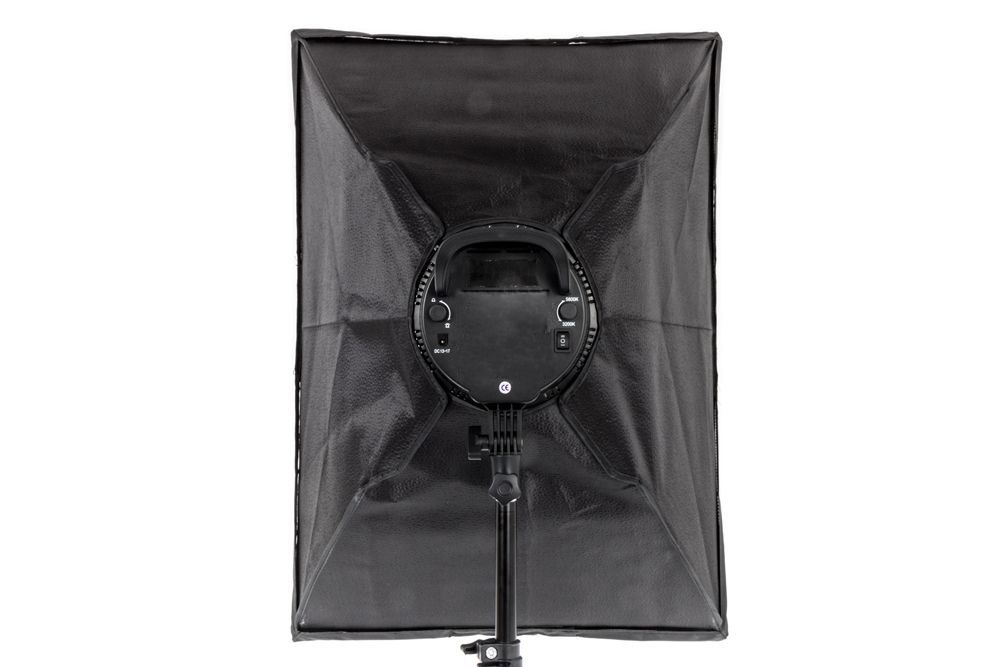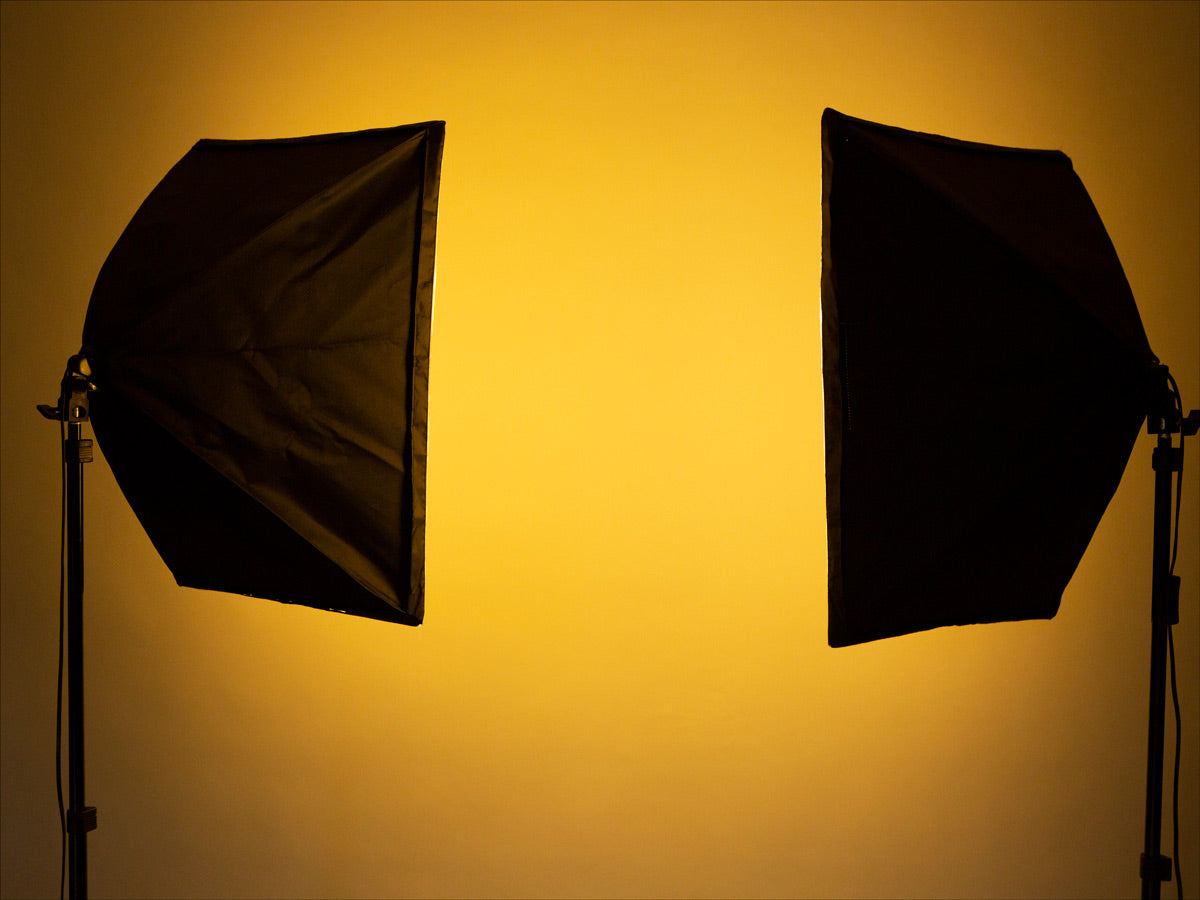
Two things happened: One that’s obvious and one that’s not. To make sure nothing moved when I switched to an umbrella, I placed gaffer’s tape on the floor to position the monolight, now with the parabolic umbrella mounted. I wanted you to see the total effect of the light modifier that was used. For my test shots I didn’t use any fill light or reflector. In the opposite corner was a 36×48-inch softbox.

In this corner was a white parabolic umbrella. To show you the visible differences between an umbrella and a softbox, I shot a comparison test using two large light sources. Point an umbrella at a subject and voilà, you’ve got soft lighting! Use two of them together and you’ll think you’re a lighting genius. Because umbrellas produce a broader type of diffused lighting, they are easier for beginners to use. It may require more flash output from the light source you’re using. When used in the traditional position, umbrellas produce indirect, bounced light. Unlike the reflective umbrella, the light produced with the shoot-through is slightly easier to control. Then, shoot the flash into the opening so that the light passes through the translucent material, making it much softer. To diffuse light with these white umbrellas, you need to point the outside part of the umbrella at your subject. Shoot-through umbrellas are made with a plain, white, and semi-translucent material. To diffuse light with this type of umbrella, you simply need to set it up so that the inner reflective part faces the subject, then you shoot the flash into the reflective material so that the “hard” light bounces and reflects a softer, broader, and more even light onto the subject. Reflective umbrellas are opaque on the outside and made of a metallic, reflective material on the inside. While innately similar, there are a few differences between the two in terms of what they look like and how they are used. There are two types of umbrellas: shoot-through and reflective. Unlike softboxes, which give you directional control, umbrellas produce a more unrestricted type of lighting that will pretty much go everywhere. Umbrellas provide photographers with a broad and soft light source that closely emulates outdoor lighting.
Softbox vs led panel how to#
If you’ve ever used a simple rain umbrella, then you’re halfway to knowing how to use one for creating artificial lighting in your photography. The photography umbrella is probably the most popular light modifier as it is highly portable, incredibly cheap, and best of all, easy to use. Photo by Alexander Dummer on Unsplash What is umbrella lighting? You can also make use of various accessories (such as grids or louvers) that you can attach to your softbox to help make the resulting light narrower or more even.

With softbox lighting, because you’re shooting through rather than relying on reflected light, your flash requires less power output to obtain the same lens aperture. Here is one example of a softbox: Profoto 2.3′ Clic Octa Softbox Softboxes come in various shapes (rectangular, square, or octagonal) and sizes, including large ones that, when placed close to a subject, produce very soft, yet directional light. It softens and diffuses the lighting from the attached light source by transmitting the light through a diffusion panel. Photo by Dane Kelly (via Unsplash) What is softbox lighting?Ī softbox emulates the soft, directional lighting usually produced by natural window light. Meanwhile, softboxes offer controlled, direct lighting, which is much like sunlight coming in through a window. But the difference between the two is that umbrellas produce broader, diffused lighting (similar to outdoor light) that is uncontrolled and uncontained. Softboxes and umbrellas are two of the most commonly used light modifiers that produce soft, diffused artificial light with a strobe. What’s the difference between a softbox and an umbrella? The closer a light source is to the subject, the softer the light will be the further away the light source is, the harder it becomes. But no matter which one you chose, both devices are governed by the same important rule: the proximity of the light source to the subject determines how hard or soft the light will be. Each light modifier has its own unique advantages and disadvantages.

When working with light sources-from strobes and speedlights to monolights and LED lights-the best way to improve the light’s quality is with a modification device such as an umbrella or a softbox as a diffuser. Portrait lighting has four major characteristics: color, direction, quantity, and quality. The difference between a softbox vs umbrella all depends on your ultimate creative goal. What kind of light modifier should you use? Umbrellas are great to start with for photographers who are new to using artificial lighting, but softboxes give you more directionality and control.


 0 kommentar(er)
0 kommentar(er)
